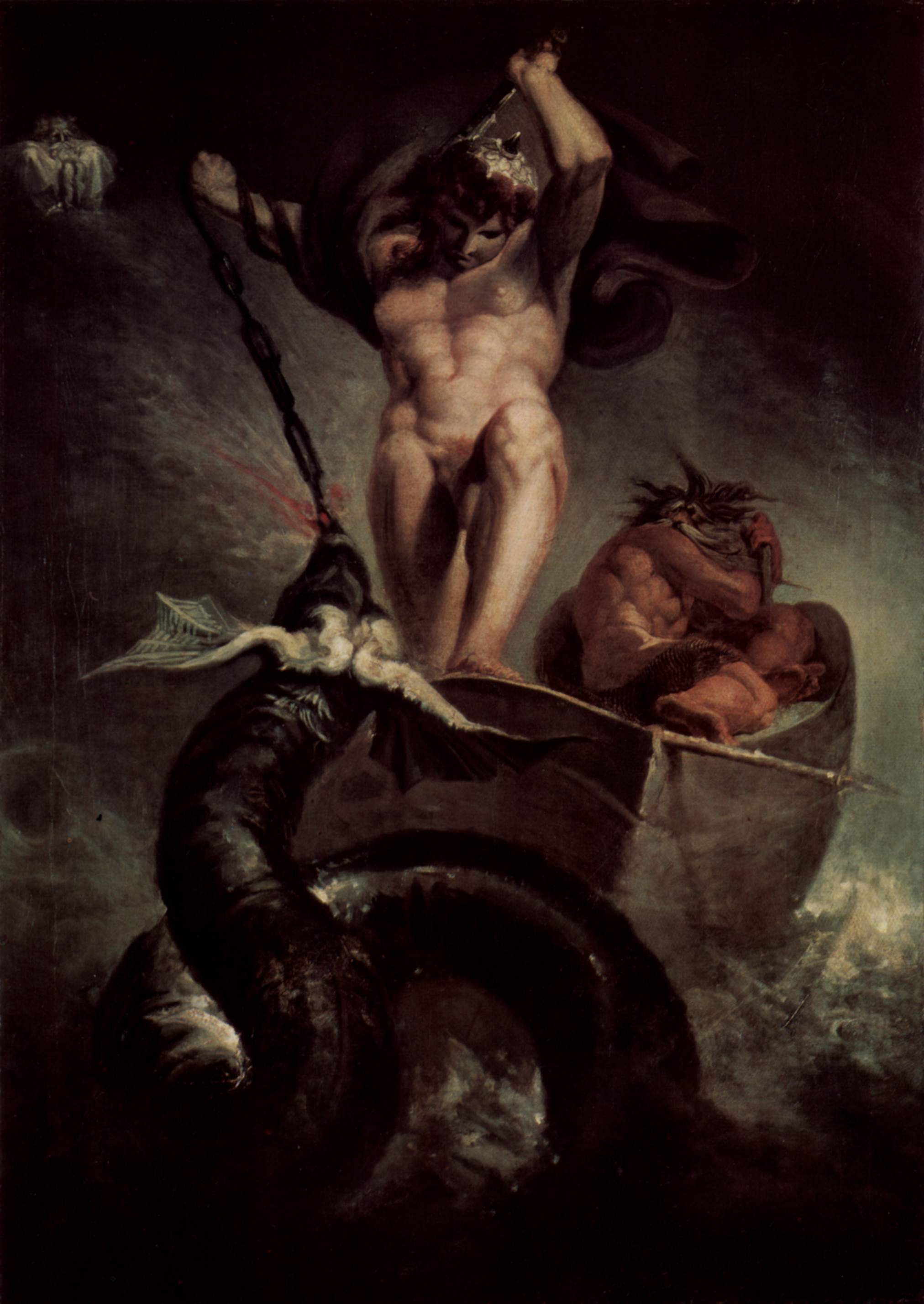Henry Fuseli, Thor Battering the Midgard Serpent, 1790
Another mythological painting today, but shifting to Norse myth this time. In this story Thor battles Jörmungand, the World Serpent, having hooked with an oxhead as bait. Thor prepares to kill the serpent with his hammer Mjolnir, raised above his head but obscured by his cloak. The giant Hymir (who cowers in the back of the boat) will soon cut Jörmungand free (for Jörmungand and Thor are destined to kill each other during Ragnarok). In the upper left corner, Odin watches the encounter from the clouds.
Henry Fuseli (1741-1825) was a Swiss painter who spent most of his life in England. He taught at the Royal Academy in London and would come to have a significant influence on both German and English Romanticism, particularly William Blake. This painting is a superb example of Fuseli's early Romanticism. Thor is depicted as a Classical nude, in keeping with the convention of Neoclassicism, while the darkness churns around him and pervades every other element of the painting. The serpent twists and writhes in agony and fury while the sea churns around him. Jörmungand was large enough to encircle the world, so one can imagine the waves it would create. This famous painting is a beautifully intense depiction of this cosmic clash. Particularly impressive are the rendering of waves and clouds, which are distinct from each other but united to frame the central incident. The lighting also guides the eye toward Thor in his heroic pose, whereas the serpent's dark and muscular body begins to blend in with the sea, a representation of its vast size. The piece epitomizes the extreme drama that will come to define much of the Romantic aesthetic.

Currently on display at the RA Nov 2019 in the Permanent Collection gallery
ReplyDelete